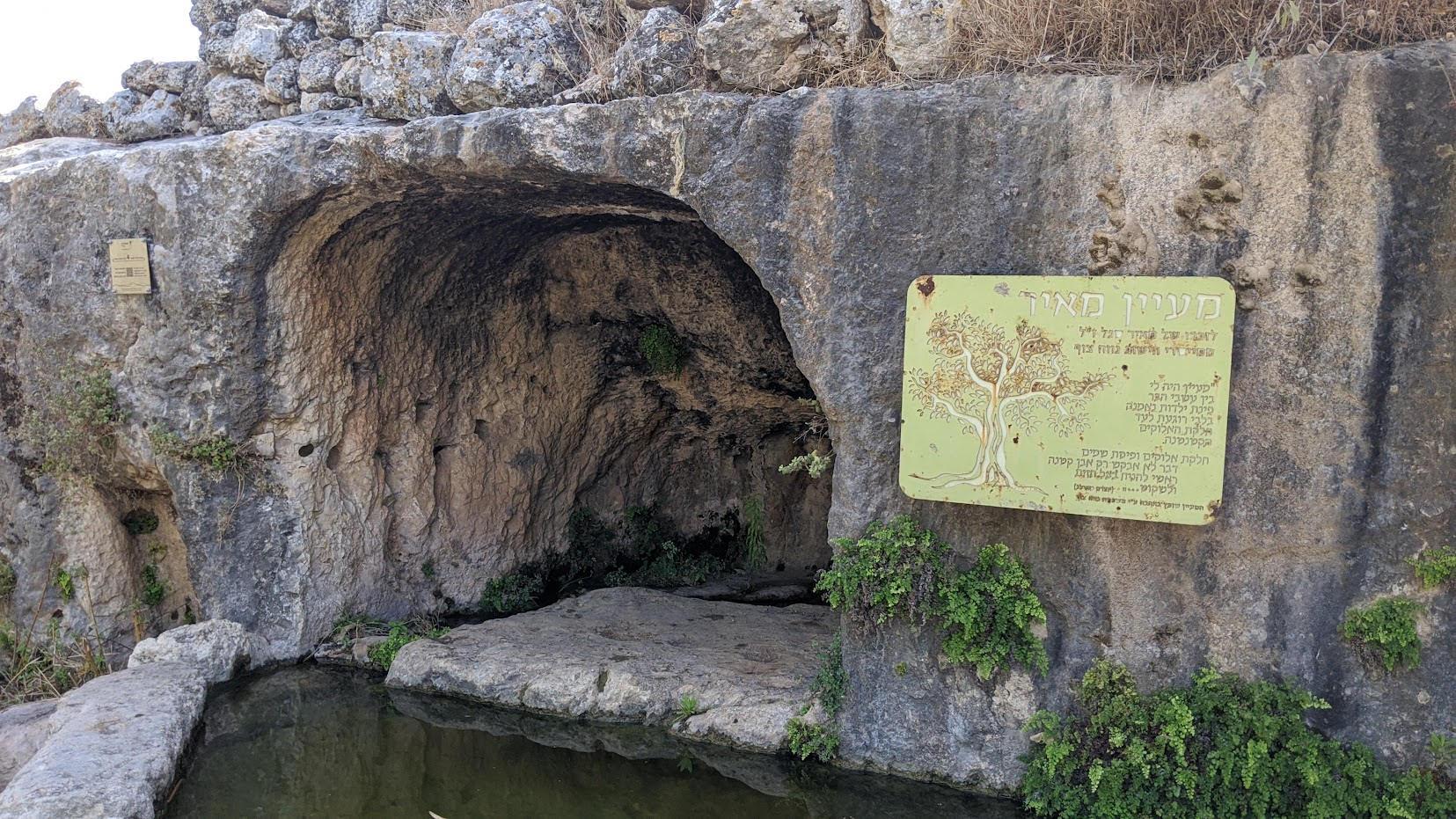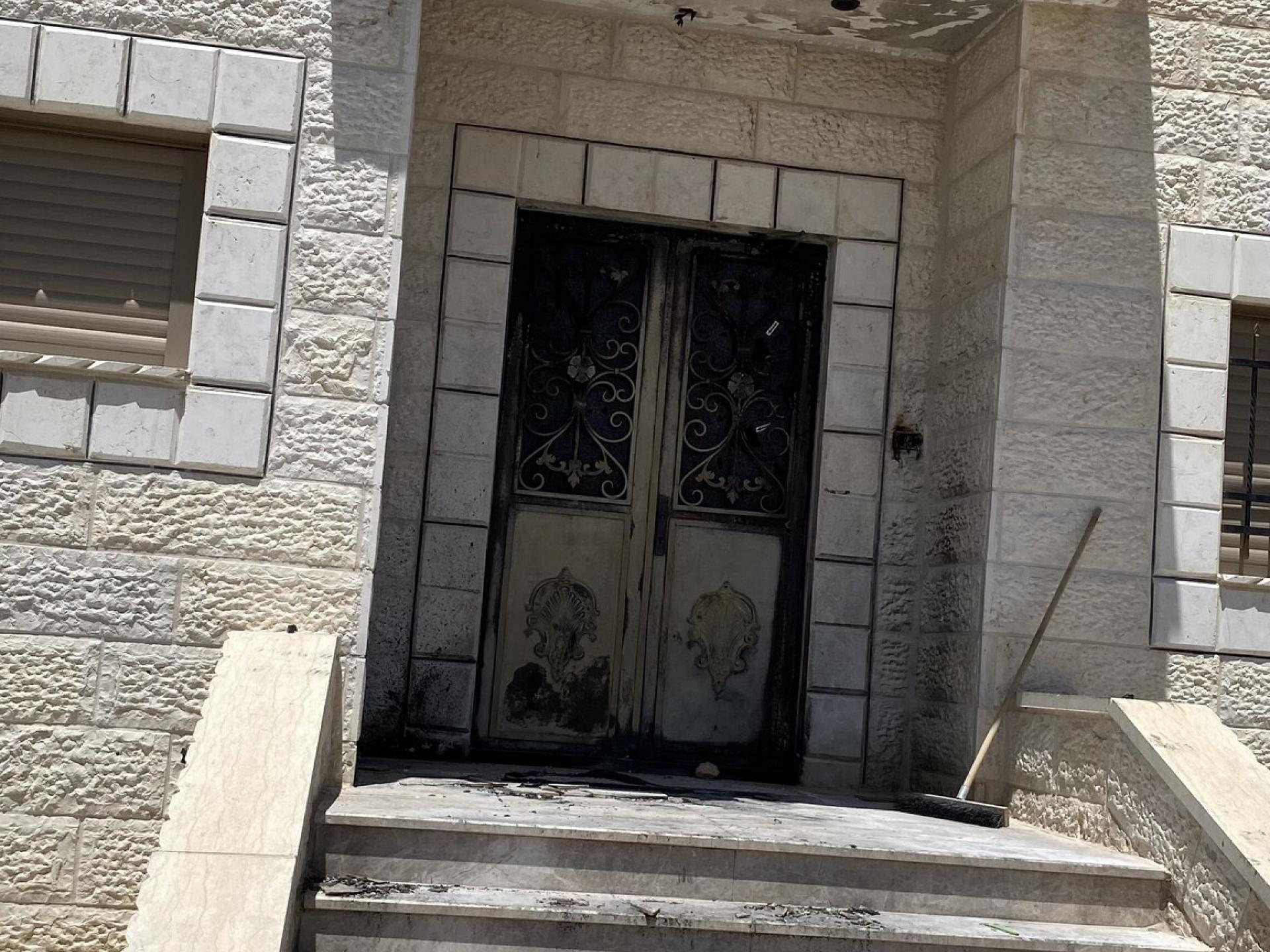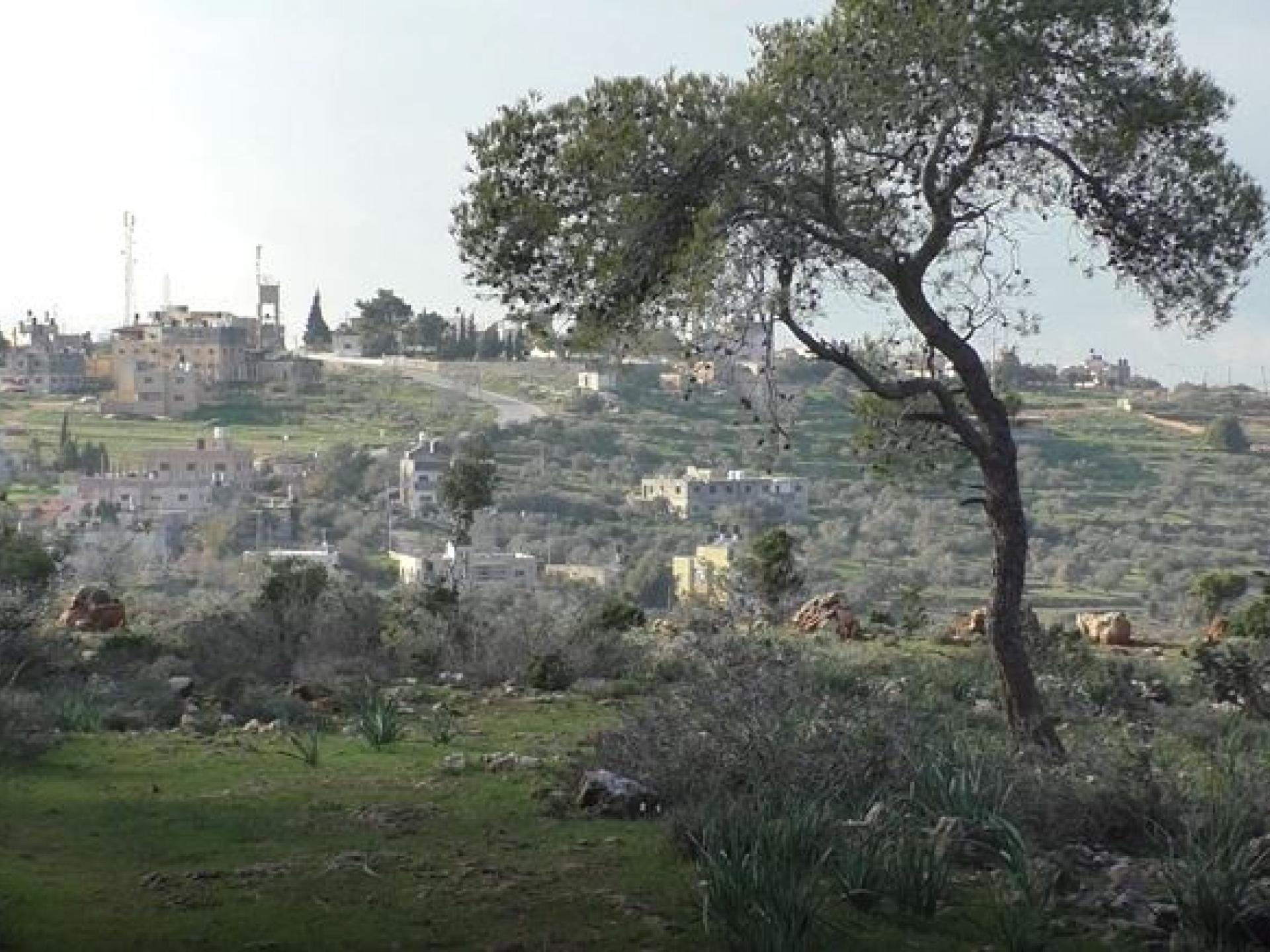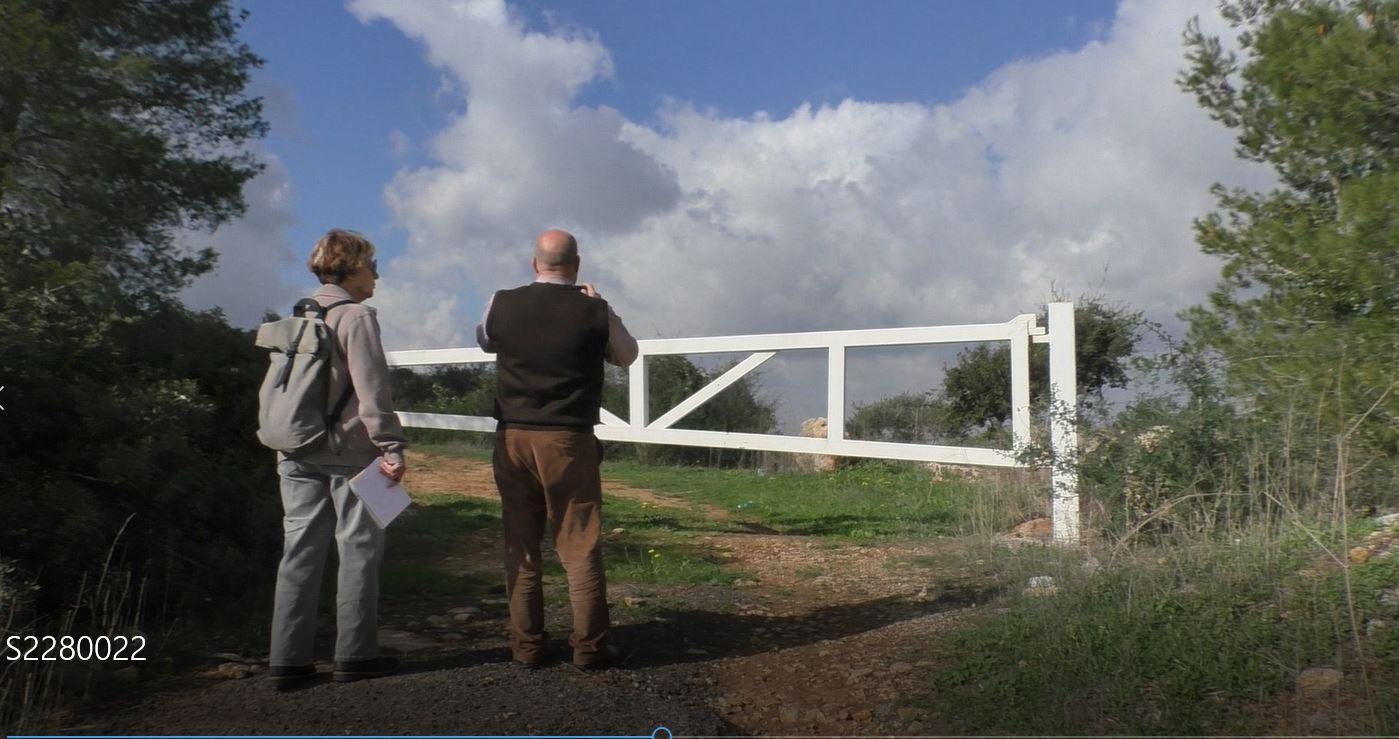
"Our journey today takes us on a visit to Umm Safa, a village in the Ramallah district that was attacked by colonist in June and July, and two of its villagers were murdered. The road passes among high hills and green wadis, there are many springs in this area.
- Near the settlement of Neve Tzuf there is a spring, Ein Kus, which the settlers call Ma’ayan Me’ir. The place is shady, partly pave, there are benches and picnic tables. A great place, only Palestinians are not allowed. An army jeep stands on the dirt track, overlooking the site. The soldier came towards us but said not a word. And if we were Palestinians? The scenery on the way is beautiful. On our right lies the village of Nabi Saleh, on the hill. Every day protest demonstrations take place there, wishing access to the holy site, the Maqam.
- Umm Safa is a small village, with about 700-800 inhabitants. Abu Baha, the deputy village chief says that they never had any problems with the colonists of Ateret (although the colony was built upon land sequestered from the village. 225 dunams. Another 400 dunams were sequestered to pave the bypass road 465). But several months ago a shepherd colonist arrived, and began to graze his flock in the Wadi between Umm Safa and Ateret. The land belongs to Umm Safa, of course. When villagers approached him, he threatened them with his gun. The thuggish “hill youths” protected him. The village youngsters began to throw stones at him, make him go away..."

- "Then, in June, about 40 armed colonists entered Umm Safa. Abu Baha says they are not residents of Ateret, but that’s where they came from. Others arrived from Halamish as well as “hills youth”. They threw grenades, burnt houses and cars, threatened the youngsters, and in the clashes that ensued – shot a 17-years-old boy to death. Abu Baha says he heard one of the officers say to the shooter, “Why didn’t you shoot him in the legs? Why in the head…”.
- The soldiers warned the shepherd not to return to the site but he wouldn’t take any orders from anyone. He came back the next day, and is there ever since. The army watches out so that the villagers do not approach him.
- In July settlers came to the village again. Once more a clash ensued, and again a young man of the village, 27-years-old, was shot to death, another seriously wounded. This time Israeli activists came to help, but the colonists threatened them not to get close. They burned cars, trees, beat a woman trying to defend her property, they beat her and threw a stun grenade in her direction. There is no one to sue for the damage...
Since then the people of the village live in fear, and are helpless. The Palestinian police do not enter and the army guards the settlers. What will happen next?

- "The Neve Tzuf, or Umm Safa forest, a nature preserve which is partly natural forest and partly on the land of Nabi Saleh. The preserve includes olive groves that belong to Nabi Saleh. We saw the trees have no fruit even though the season has begun. The groves appear abandoned and neglected. The regulations governing the nature preserve don’t permit the owners of the grove to plant new trees, and the water shortage also causes serious damage to the farmers.
- In the Halamish junction - The synagogue checkpoint erected by the settlers of Halamish/Neve Tzuf still stands. Graffiti on the nearby bus stop: Death to Arabs. The settlers don’t cease their attempts to connect Neve Achi and Neve Tzuf, which are divided by the road to Beit Yallu and Deir Nizam.
- According to the soldier at the checkpoint, there are occasional disturbances but the army’s job is to restrain the settlers and allow the Palestinians to reach their homes (it appears the Messiah has arrived…). He says there are two synagogues in the settlement, but the settlers erected the one at the junction just to display their presence. He was polite and allowed us to photograph."
Irit Segoli, Nurit Popper, Rikki Shaked, a report from 3.10.23

FROM THE CHECKPOINT TO OPEN SPACES
Two years ago, when we came to the checkpoint at the Nabi Saleh village, we found the checkpoint shut. Naji Tamimi (today the head of the village) came out and we asked him about the checkpoint. He raised his hands in the air and said, "Nu, how much can we talk about this checkpoint?
He invited us to join him on an excursion. We entered the Umm Safa and Deir Nizam Nature Reserves. Naji pointed out the settlement of Halamish, its sewage plant and the olive grove establish by the settlers right in the Deir Nizam Nature Reserve. He told us about the Hovlata Antiquities Site where as a child he learned to swim in the water cistern adjacent to the site. Today, he is unable to go there as it is located in the heart of the Halamish Settlement. We walked to the spring of Ein Kus (known as the Rainbow Spring), now renamed by the Occupation as Meir Spring. We climbed up to the Tivna Antiquities Site and the burial caves at the entrance to the Dir Nizam village.
Since that first excursion, we share Naji Tamimi’s vision for Nabi Saleh’s ancient sites and turning them to a place for the community and its children with a focus on environment, Palestinian history and archeology, in order to teach them that Palestinian history doesn’t begin nor does it end with the Israeli Occupation.
Irit Segoli, from MachsomWatch Newsletter Spring 2018.
Also a Video in Hebrew: https://youtu.be/DmIHhzBePdc
